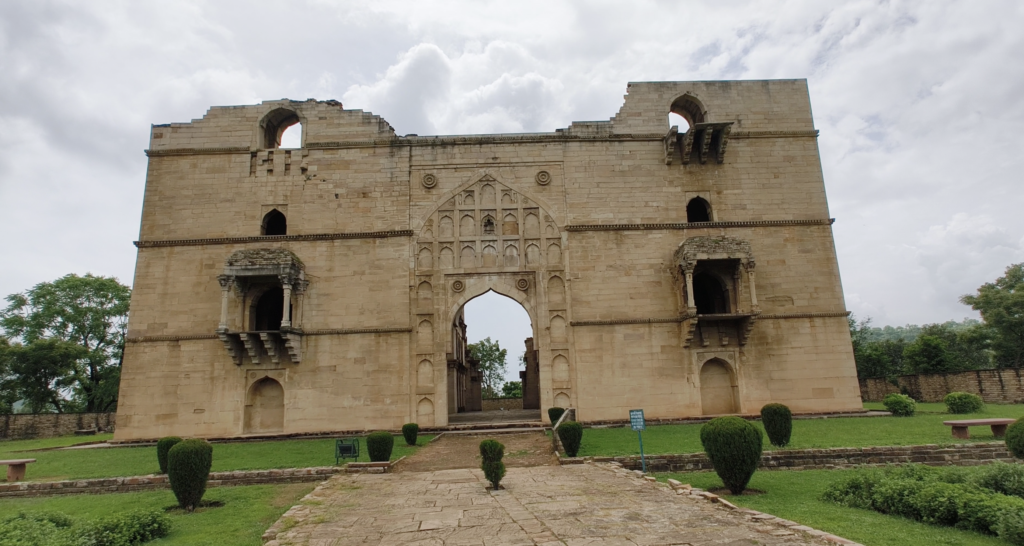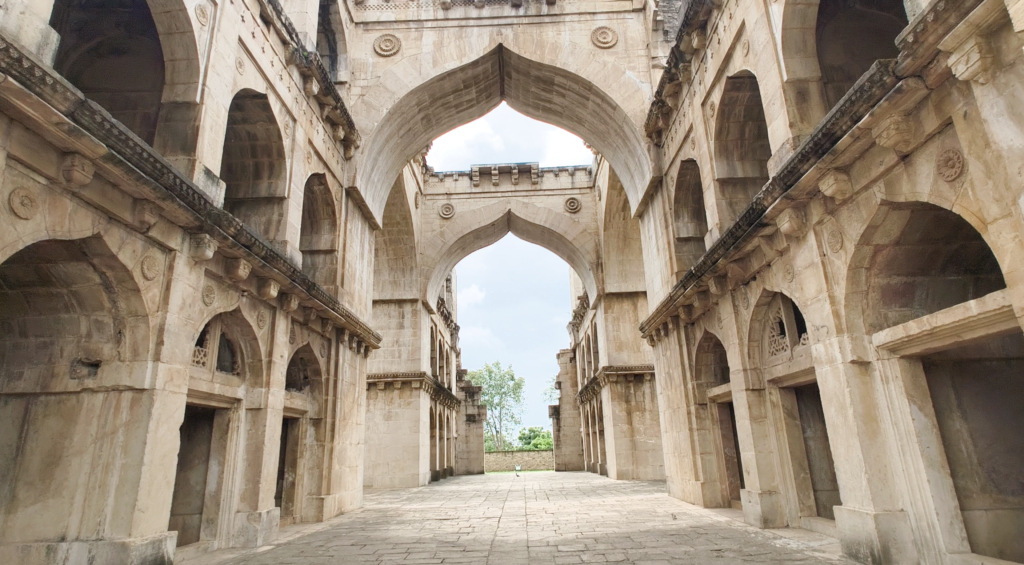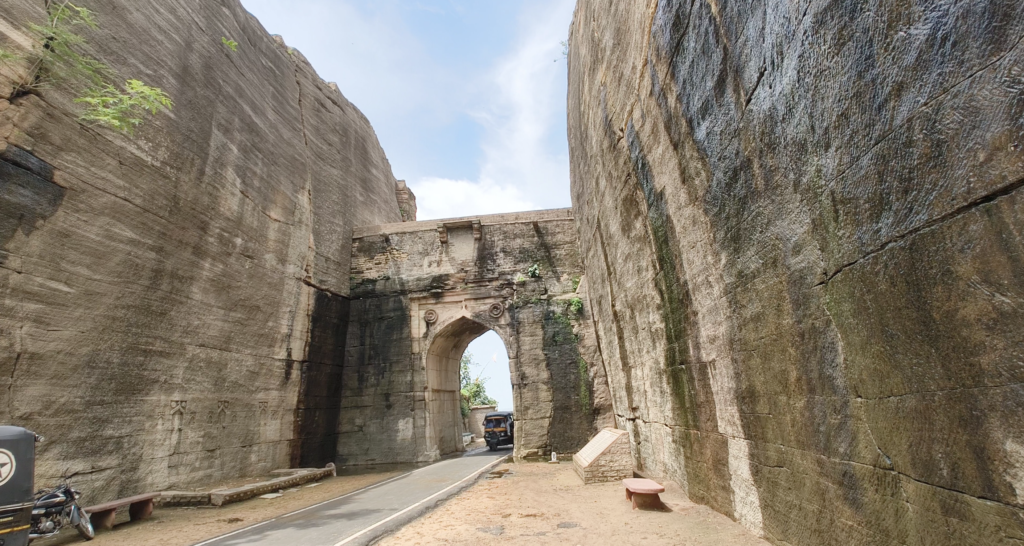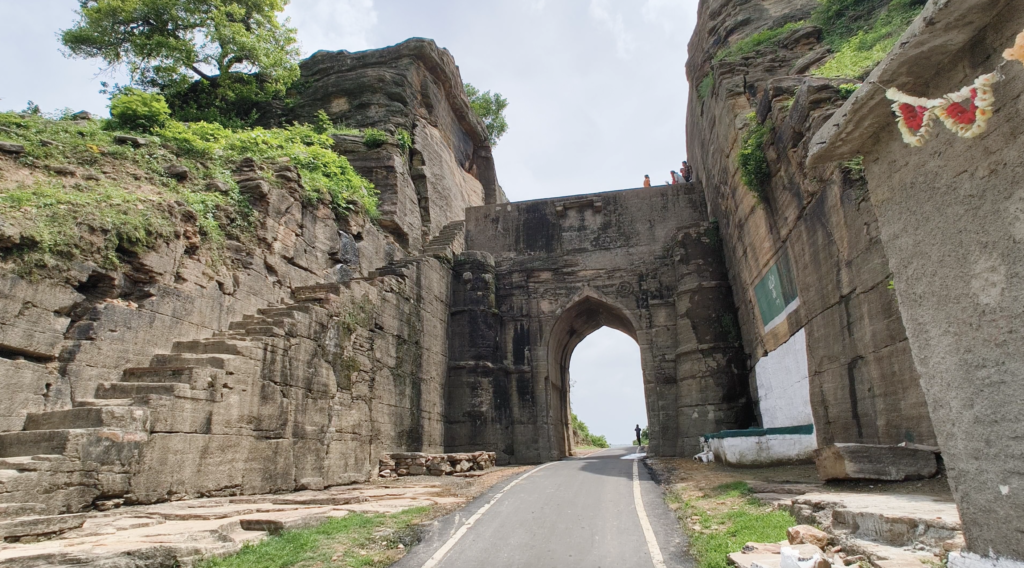Today, we’re visiting one of Chanderi’s most significant historical monuments, Koshak Mahal. Built in 1445 AD by the Sultan of Malwa, Mahmood Shah Khilji, the palace commemorates his victory over Sultan Mehmood Sharki in the Battle of Kalpi. To mark this triumph, Mahmood Khilji ordered the construction of a seven-storied palace, also known as Koshak-i-Haft Manzil.

The Architecture of Koshak Mahal
Koshak Mahal’s design is notable for its Greek cross layout, dividing the building into four equal quadrants. Each of these sections is symmetrical, both in its dimensions and architectural details. The palace was constructed using sandstone and follows the Afghani style, which was popular during that period.
The ground floor features tall, arched entrance doorways at the center of each of its four sides. Smaller arched openings and balconies can be found on the outer walls, adding to the structure’s elegance. The building has minimal ornamentation, with some subtle jaalis (latticed screens) and brackets adding to its charm.
The architectural style of Koshak Mahal closely resembles that of Mandu, the capital of the Malwa Sultanate, suggesting that similar design principles were used across the region.

The Fate of the Seven Stories
Although the palace was originally intended to have seven stories, only three full levels remain today, with the fourth level only partially intact. There’s debate among historians about whether the building was ever completed as originally planned. Some believe that the upper stories may have collapsed over time, while others think the project was never finished.
Restoration and Preservation
In 1923, during the reign of Maharaja Madhava Rao Scindia of Gwalior, Koshak Mahal was repaired to help preserve its historical value.
Conclusion
Koshak Mahal, with its majestic design and intriguing history, remains a significant monument in Chanderi. While the exact details of its original form remain uncertain, its architectural beauty and historical importance continue to make it a notable landmark.
Video
Watch full video on YouTube (Hindi)

